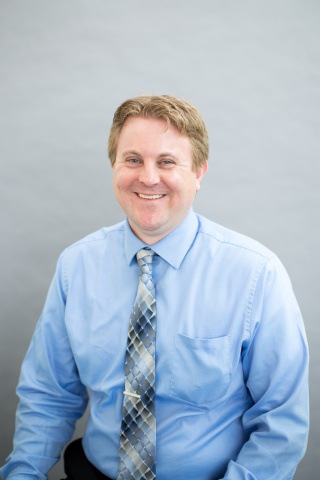One of the famous formulas to come out of the Reformation era is that of semper reformanda, which means “always reforming.” This is a particularly appropriate topic for this observance of Reformation Day, now 500 years after Luther’s publication of the 95 Theses. A proper understanding of the imperative to be always reforming requires first, continually seeking integrity in doctrine and church life, and next, seeking fidelity in practice and public life.
The Reformation of Doctrine
The point of departure for the Protestant Reformation was originally a somewhat limited set of topics or doctrines, particularly those related to soteriology the doctrine of salvation. In this sense Luther’s focus on indulgences can be seen as representative. His goal was to reform the abuses of the theology and practice of the sale of indulgences. This led him early on to explore other, related doctrines, including justification and ecclesiology.
The relationship of these early generations of reform and the later generations comes in the more thorough, consistent, detailed, and comprehensive systems of theology developed in the era of Protestant orthodoxy. Contrasting the early and later eras, the eminent Reformation historian Richard A. Muller writes, “The selectivity of the Reformation in its polemic had to be transcended in the direction of a reformed catholicity.”
From the perspective of doctrine, then, we can see the Reformation as an effort initially to clarify and correct those theological teachings that had, from the perspective of the Protestant reformers, been corrupted or otherwise taught falsely. Often this was done polemically or in occasional fashion, as is the case with the pamphlet wars of the early 16th century. From this somewhat narrow starting point the need became clear to develop and articulate comprehensive systems of theology, both for apologetic as well as for institutional and intellectual reasons. This is the era of Protestant orthodoxy, lasting roughly from the third generation of reformers up into the 18th century.
The program of the reformers and the later Protestant orthodox was thus not a complete and total break with everything that had preceded. It was, instead, a selective and prudent pruning of doctrine: correcting, overturning, reinterpreting, and affirming wherever necessary. Where Calvin and Luther often set a polemical edge in disputes with Roman Catholic and Anabaptist theologians, it was often for their more systematic contemporaries and successors to more carefully articulate and develop statements not only for theological dispute but also for theological edification and education.
Doctrine, however, was never the end of the story and in many ways was only the beginning.
The Reformation of Practice
If, as Muller has put it, “right teaching was the goal of the Reformation from its moment of inception,” then similarly right practice was the goal of right teaching from the beginning. The doctrines that came under scrutiny were not random or haphazard. They were those that were understood to be most existentially pressing at the time, both individually as well as communally. Luther’s own personal struggles over the doctrines of grace, merit, and justification are well known. For the reformers, emphasis on salvation by grace alone through faith alone answered the needs of a lived experience engendered by their interaction with late medieval piety and teaching.
Right teaching that leads to right practice, that is, a life lived in grateful obedience to God.
The reformers excoriated the so-called “doubt doctors” whose teachings were responsible, in their view, for instilling radical uncertainty among Christians as to their status before God. All of this uncertainty and doubt fed in to the indulgence trade and the place of the church hierarchy and its foremost representative, the pope, as a dispenser of comfort and assurance.
This helps us understand, for instance, why the theme of comfort is so pervasive throughout a document like the Heidelberg Catechism, whose famous opening question is, “What is my only comfort in life and in death?” The catechism gives the reassuring answer:
“That I with body and soul, both in life and death, am not my own, but belong unto my faithful Saviour Jesus Christ; who, with his precious blood, has fully satisfied for all my sins, and delivered me from all the power of the devil; and so preserves me that without the will of my heavenly Father, not a hair can fall from my head; yea, that all things must be subservient to my salvation, and therefore, by his Holy Spirit, He also assures me of eternal life, and makes me sincerely willing and ready, henceforth, to live unto him.”
In this short answer we see the themes not only of the catechism itself, but also of the Reformation itself: right teaching that leads to right practice, that is, a life lived in grateful obedience to God. The Heidelberg Catechism was published in 1563, but this emphasis on discipleship throughout the whole life of the Christian goes back to the beginning of the Reformation. Indeed, the very first thesis of Luther’s 95 Theses states that: “Our Lord and Master Jesus Christ, when He said “Repent” [Poenitentiam agite], willed that the whole life of believers should be repentance.” In this first statement of reformational intent, Luther thus articulates an emphasis on “the whole life of believers.”
Always Be Reforming
In this way the Reformation era was about reformation of doctrine and practice, not only in the life of the individual, but also in the social order, the “whole life of believers” in every way. This is the sense in which the reformational impulse to “always be reforming” results in a kind of continual furthering of such reformation. Indeed, the language of “further reformation” is related to the movement in the Netherlands known as the Dutch Second or Further Reformation (nadere reformatie), a continental counterpart to English Puritanism. These movements are characterized by efforts to continue and further develop and apply the Reformation and its teachings consistently and rigorously throughout all of individual and communal life. This means not only applying Christian wisdom and insight into social matters, but also using the Christian mind to explore all of God’s creation and all of God’s wonderful truths.
As we seek to prudently live in loving community, we ought to continue to always seek reform according to God’s will, in our individual lives as well as our communities. This conviction is one of the lasting legacies of the Reformation era. And it was an agenda pursued not only by Lutherans and Reformed, but also by Anabaptists, radicals, Roman Catholics, and others, as they sought to have both integrity in doctrine and belief as well as fidelity in practice.
This “always reforming” impulse is, perhaps counterintuitively, thus a kind of ecumenical endeavor, one that each Christian is called to pursue within his or her own context and in relationship with others. The Dutch Reformed theologian Herman Bavinck captured this imperative to further reformation well when he observed in the context of disputes about the role of the family in the social order, that “All good, enduring reformation begins with ourselves and takes its starting point in one’s own heart and life.” He goes on to note that “such a reformation immediately has this in its favor, that it would lose no time and would not need to wait for anything. Anyone seeking deliverance from the state must travel the lengthy route of forming a political party, having meetings, referendums, parliamentary debates, and civil legislation, and it is still unknown whether with all that activity he will achieve any success. But reforming from within can be undertaken by each person at every moment, and be advanced without impediment.”
That recognition is a key legacy of the Reformation era and one we would do well to continually recognize and apply in our times as well. There is never a time or place that is without corruption and evil, and thus there is always a need to seek reform and improvement.
This essay is adapted from remarks given at a conference hosted by the Center for Evangelical Catholicism in Greenville, South Carolina, “500 Years Later: Where Do We Go From Here?”




